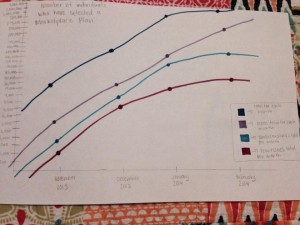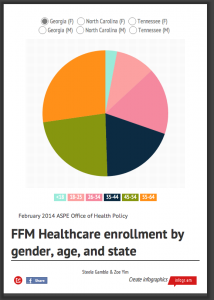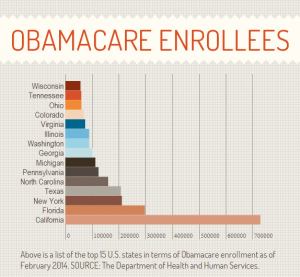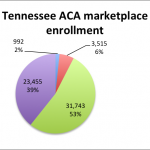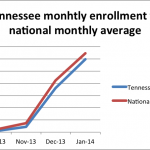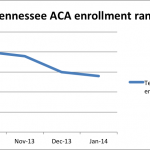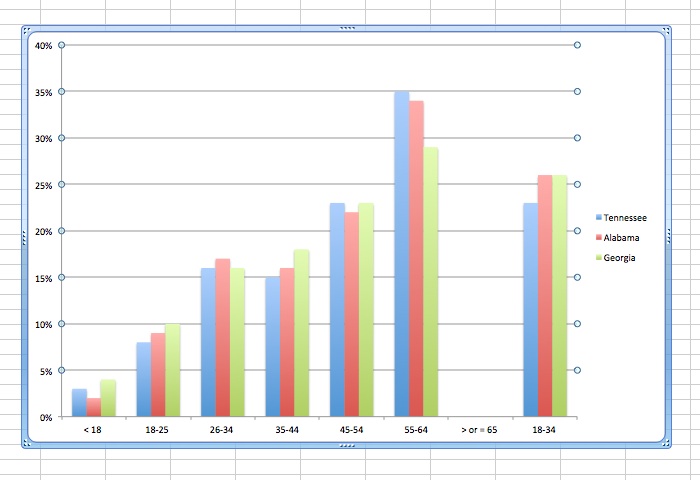Monthly Archives: February 2014
Chart
Table
| 1 | 3 | 3 |
| 4 | 5 | 7 |
Nickgeidner x DressLands Store Maxi Dress
Nickgeidner x DressLands Store Maxi Dress – Sequin Embellished Sleeves/Pale Peach or Black
The lightweight, woven fabric from which this nickgeidner x DressLands store beautiful maxi dress was constructed contains 100% Polyester. The dress comes in a delightful shade of pale peach or black. It can be hand washed in cold water. For best results, we recommend line drying. This dress has a round neckline and sequin embellished sleeves and detailing around the shoulder area. It features a zipper in back and a button keyhole closure at the nape of the neck. This dress was designed to have a regular fit and is true to size. It has a beautifully fitted bodice that was designed to compliment the female form without being too tight or constricting. The skirt flows beautifully from the set in waistline, providing a moderate amount of fullness. There is a slit in the back of the skirt. This dress is available for purchase in sizes Small, Medium and Large.
Basic web structure
Here is the simplest example of an HTML webpage:
<html> <head> </head> <body> Hello World! </body> </html>
HTML is made up of series of tags around content. For example, <body> is a tag. It holds the only content on the page “Hello World!” Most tags require a closing tag, such as </body>.
<table width="400">
Tags can have attributed. For example, this is a <table> tag utilizing the width attribute.
Being that we are interested in data journalism, there are few tags we should definitely know. First is the anchor tag. The anchor tag is used to link within a page or between pages. This is one of the links from the health departments restaurant inspection database:
<a href="/Clients/TDH/State/Tennessee_Website.nsf/Food-FacilityHistor…OpenView&RestrictToCategory=64B2374EEC1440658825786500569063"></a>
Remember, the first step in my project was scraping all the links. The <a> is the anchor tag. The “href” is an attribute that denotes we are creating a hyperlink to another url.
Once I had all the links, I need to pull information from a table. Here is what the code of a basic table looks like:
<table style="width:300px"> <tr> <td>Jill</td> <td>Smith</td> <td>50</td> </tr> <tr> <td>Eve</td> <td>Jackson</td> <td>94</td> </tr> </table>
We use the <table> tag to create the table, the <tr> tag to denote a new row and the <td> to insert a new element. The code above would make the following table.
| Jill | Smith | 50 |
| Eve | Jackson | 94 |
Lots of structured data is in the form of tables, but sometimes it is in lists. Their code looks a lot like tables:
<ul> <li>Coffee</li> <li>Milk</li> </ul>
<ol> <li>Coffee</li> <li>Milk</li> </ol>
The first code snippet will create an unordered list (or bulleted list):
- Coffee
- Milk
The second snipper will create an ordered list (numbered):
- Coffee
- Milk
The final tag we must concern ourselves with is the <div> tag. The <div> tag generically refers to a division within the HTML code. Why we need to concern ourselves with the <div> tag is that it has become a catch-all tag for the implementation of CSS, or cascading style sheets.
Where HTML tell the computer what content to display, CSS tells the computer how to display that content. A style can be added to any tag.
<div style="color:#0000FF"> <h3>This is a heading</h3> <p>This is a paragraph.</p> </div>
The above code results in the following styled content.
This is a heading
This is a paragraph.
While in the above example, the style was applied to only the <div> to which it was attached, we can also apply styles universally via the <style> tag.
<html>
<head>
<style>
h3 {color:blue;}
p {color:blue;}
</style>
</head>
<body>
<h3> This is a heading.</h3>
<p> This is a paragraph. </p>
</body>
The above code would result in the same content as the immediately preceding example.
Finally, you can also load a stylesheet from an external “.css” file. This allows for quick, uniform application of styles to whole websites, comprised of hundreds or thousands of pages.
Enrollment rates for government health care rise in Tennesssee
by Gabrielle O’Neal and McKenize Martin
The Department of Health and Human Services released the Enrollment Report for February 2014 on Wednesday. This is the programs fourth report since its start on Oct. 1, 2013.
After much controversy the Affordable Care Act was launched after the Supreme Court ruled it constitutional and was made available for enrollment in October 2013. When the program launched on October 1, flaws in the marketplace website made it difficult for people to enroll. They were unable to go through the steps to receive a quote, and complete the transaction. Changes were made to the website and resulted in overall enrollment rates rising throughout the country.
The recently released data shows big changes in enrollment rates in Tennessee. According to the data, as of February 2014, there are 87,890 people in Tennessee enrolled in government healthcare. The initial enrollment rate in November of 2013 was 992 and by December 2014 the enrollment rate was 4,507. The enrollment rate jumped about 35 percent in a month. The enrollment rate has gone up about 87 percent from its initial launch in October 2013 to February.
The national enrollment for the first month in November 2013 was 106,158 enrolled and by February 2014, more than 3,000, 000 were enrolled and had selected a marketplace plan. Overall, the national enrollment rate went up about 27 percent.
Tennessee, like Texas and North Carolina do not have their own marketplace and are still on the federal facilitated market place. The initial enrollment rate in Texas was 2,991. As of February 2014, the enrollment rate was 273, 496. Enrollment in Texas went up about 90 percent. In North Carolina, the initial enrollment rate was 1,662. By February 2014, the enrollment rate was 175, 515. The North Carolina enrollment rate went up about 104 percent.
Tennessee healthcare.gov enrollments meet national averages for age and gender
930,000 people or 15% of Tennesseans were uninsured in 2012. President Obama aimed to insure these individuals through the Affordable Care Act.
59,705 Tennesseans selected a marketplace plan in February. 70 percent of this number chose a silver plan, and 78 percent needed financial assistance in order to receive health care. This marks a threefold increase in November.
Affordable Healthcare Act fails to draw young people into the plan. The national average for coverage of the young adult age group (18-34) is 24 percent. This is low compared with the White House’s targeted 40 percent.
Tennessee met the national average for the young adult age group.
Females in Tennessee also held close to the national gender majority who signed up for insurance for both state and federally run insurance plans.
No individuals 65 and older chose plans in Tennessee. However, individuals in the 55-64 year olds were the largest percentage of individuals who chose enrollment with 33 percent.
In the age group categorizations, there was little differentiation of percentages in healthcare selection in Tennessee, North Carolina, and Georgia.
The Obama administration estimated that 2.7 million of 7 million individuals enrolling in coverage would be young adults. Covering this age category would promote a healthier population, whose premiums could subsidize the health care of older and less healthy individuals.
American young adults hesitate to sign up for healthcare shown by the low national average. Under penalty of higher taxes, Americans are mandated by law to have a plan.
Resistance occurs says Brendan Buck, a spokesman for House Speaker John Boehner, because a “one-size-fits-all plans that come with high costs for limited access to your doctor” is the only plan available after the law that cancelled the plan many Americans had, liked, and could afford.
Data indicates Obamacare trying to gain steam in Tennessee, Southeast
By: Gage Arnold and Dargan Southard
After a less-than-spectacular introduction, it appears the Affordable Care Act – despite its low enrollment numbers — is gaining traction in Tennessee.
According to enrollment data released by the Department of Health and Human Services on Feb. 12, Tennessee now has 59,705 enrollees for Obamacare, equating to 9.4 percent of residents per capita in the state based off 2010 census population information.
In comparison, Tennessee’s 9.4 percent per capita stacks up similarly with Georgia – 10.4 percent per capita – and Alabama’s – 9.2 percent per capita.
Tennessee also ranks 14th out of U.S. states in total individuals who have selected a marketplace plan in the latest data. Only Virginia, Georgia, North Carolina and Florida ranked higher than Tennessee in total enrollees out of Southeastern states.
Maybe most impressive regarding the numbers, however, is the growth percentage Tennessee has seen over the past month.
Tennessee’s growth rate has been 64.7 from January to February, ranking them near fellow Southern states Alabama (53 percent), Georgia (72.8 percent) and South Carolina (71.3 percent).
The February data indicated the U.S. has seen a 3 percent growth in the 18-34 age range for marketplace plan selections.
Tennessee matches the national average with 25 percent of its enrollees falling under the 18-34 age range.
Alabama, 28 percent, and Georgia, 27 percent, both rank above the national average and are firmly located in the upper tier among U.S. states in the 18-34 enrollees bracket.
On a broader scale, the numbers indicate Obamacare’s enrollment numbers reached nearly 3.3 million in February.
This comes on the heels of President Barack Obama’s urge to get 7 million enrolled in the program by March 1.
Looking at the exponential growth of the numbers, if the U.S. enrollment rate continues to grow following January’s growth rate, the enrollment total could reach at least 5 million by March 1.
After unveiling the healthcare system on Oct. 1, glitches abounded and many had difficulty logging onto and registering for the healthcare program.
Those issues have since been resolved, evident by the 50 percent growth rate enrollment saw between February – 2.2 million enrollees – and February – 3.3 million enrollees.
2/19 assignment: February ACA numbers released
by David Doyle and Sam Habib
- A breakdown of Tennessee’s current cumulative ACA enrollment by month, October 2013 – January 2014
- A comparison of Tennessee’s marketplace enrollment figures vs. the national average, October 2013 – January 2014
- Despite trending slightly lower than the national average, Tennessee has consistently been in the top 20 states in terms of enrollment figures since the ACA marketplace opened.
The latest federal government enrollment numbers for marketplace plans put into place by the Affordable Care Act are out, and for the fourth month in a row, Tennessee’s enrollment numbers place its rank in the upper half of participating states.
As they have since the marketplace’s October opening, Tennessee’s Affordable Care Act enrollment numbers lagged behind the total national average across all states and the District of Columbia. But at the same time, the number of new Tennessee residents enrolling in an ACA marketplace insurance plan was nonetheless enough to keep it ranked in the top 15 states in terms of marketplace enrollments for the second consecutive month.
As of February 1st, 59,705 Tennesseans enrolled in an ACA marketplace health insurance plan, nearly 5,000 short of the national average of 64,696. Though this number is below the national average, it is skewed by the enrollment rates of high population states like California, which added over 728,000 new enrollees by the end of January, and Florida, which added nearly another 300,000.
Recent data shows that enrollment in the combined 45-64 age group rose significantly more than any other age group by 53%, while enrollment in the 18-34 age group only saw a 25% overall rise. In Tennessee, however, enrollment dropped in the 55-64 age group by 2%, from 35% to 33%, with the rates of 18-25 year olds remaining the same.
Tennessee’s enrollment numbers as of February were enough to move Tennessee into the 14th rank overall in terms of number of new enrollees. Tennessee has consistently been in the upper half of states when ranked in terms of the number of new residents enrolling in an ACA-backed insurance plan, moving from the 20th spot as of the end of October to 15th by the end of 2013.
Tennessee’s January numbers show a relative slowdown in the number of new enrollees compared to December. After a rocky first two months left Tennessee with just over 4,500 enrollees as of the end of November 2013, Tennessee saw a sharp upswing in enrollees, adding 31,743 new participants to its marketplace rolls in December. January’s total of 23,455 represents a mild drop compared to December’s jump.
February healthcare numbers released, lower than expected
By: Casey Black and Samantha Smoak
The Department of Health and Human Services released the Enrollment Report from February 2014 on Wednesday. This is the fourth report since the program’s official start on Oct. 1, 2013.
After months of racing to push the Affordable Care Act through Congress and a controversial Supreme Court decision, Obamacare was officially available to the public on Oct. 1, 2013. Flaws in the marketplace website stirred up more controversy as US citizens in pursuance of government healthcare were unable to make it through each step, receive a quote, and complete the transaction. Changes have solved many of the cited issues, and overall enrollment rates have risen across the country.
The data recently released shows changes in enrollment rates in Tennessee and the surrounding states. According to the data, the rates of enrollment rose the most in the 55-64 age group. In Tennessee, enrollment for the 55-64 age bracket dropped from 35 percent to 33 percent. Alabama’s enrollment also dropped from 29 percent to 27 percent and Georgia’s dropped from 34 percent to 32 percent.
The rates for the 18 and younger age range stayed around the same amount with Tennessee at a three percent enrollment rate, Alabama at two percent and Georgia at four percent. The 18-25 age bracket reveals a slight a jump with Tennessee’s enrollment rate at nine percent, Alabama’s at ten percent and Georgia’s at eleven percent. Once entering the 26-34 and 35-44 age brackets, no dramatic change is seen in enrollment rates.
As of December 2013, the Obama administration cited a shortage of six million enrollees to their goal of seven million. With the aggressive action taken to improve the website, the data released for the month of February revealed an unexpected lack of change in enrollment rates.
